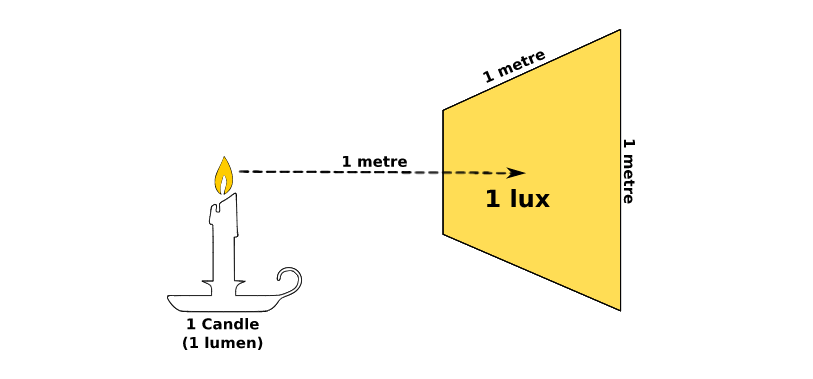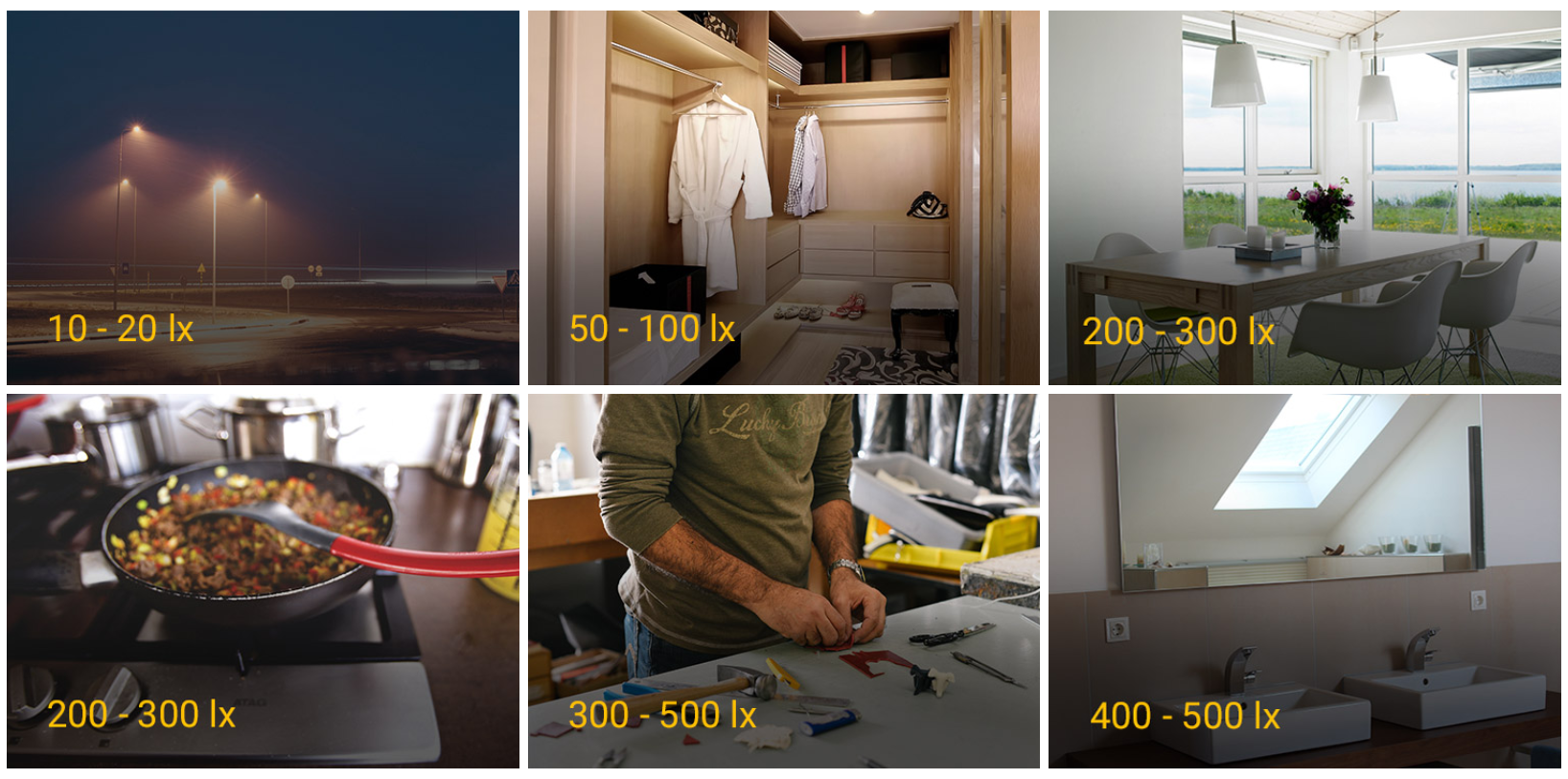1 What is lux?
Lux is used to measure the amount of light output in a given area – one lux is equal to one lumen per square meter. It enables us to measure the total “amount” of visible light present and the intensity of the illumination on a surface. Thus, it is important in what direction the light source shines. This value is irrespective of the number of light sources it uses, the colour or the structure where the light shines. If the amount of Lux is indicated by a lamp, it is usually in the centre of the beam where the light intensity is highest.
Lux is a unit of light measurement taking area into account. In other words, light intensity.
Lux is a great measurement for determining what we see as the brightness of a beam. If the light output is concentrated over a smaller area, we see this as very bright. If the light output is spread over a larger area, we see this as very weak. We normally use mirrors, reflectors, and optics to control the path of light and create the desired beam pattern. Lux also determines the magnitude of light intensity travelling over distances. A light that is configured for high lux output will travel farther but will have a smaller footprint of light , and a low lux level will be configured to travel shorter distances but have a larger footprint.
2 What is lumen?
Lumen is the unit of the light current. This indicates the total amount of light emitted by the light source, no matter what direction it is. In Lumen, efficiency is especially important because it indicates how efficient the light source converts power into light. This is called the Lumen / Watts ratio (Lm / W). With LED lights this value is much higher because they need less power to generate a particular Lumen current.
Strictly speaking, the lumen (symbol: lm) is the SI derived unit of luminous flux, a measure of the total quantity of visible light emitted by a source per unit of time. Luminous flux differs from power (radiant flux) in that radiant flux includes all electromagnetic waves emitted, while luminous flux is weighted according to a model (a “luminosity function”) of the human eye’s sensitivity to various wavelengths. Lumens are related to lux in that one lux is one lumen per square meter.
3 The relationship between lux & lumens:
One lux (1 lux) is defined as being equivalent to one lumen spread over an area of one square metre. To put it another way:
A specification in lux tells you how many Lumens (total light output) you need given the measured area you are trying to illuminate.
So 1,000 lumens, concentrated into an area of one square metre, lights up that square metre with an illuminance level of 1000 lux. The same 1,000 Lumens, spread out over ten square metres, produces an illuminance level of only 100 Lux.
Lighting larger areas to the same necessary lux levels will requires a larger measured level of lumens – this is usually achieved by increasing the number of light fixtures (and hence the power consumed). Bigger commercial & industrial buildings (such as factories and warehouses) have large open spaces so a large number of high power light fittings (‘high bay’ and ‘low bay’ types)are generally required.
A good way to remember the differences between terms is:
Lumens are how much light is given off
Lux is how bright your surface will be
4 What is watt?
Watts are the measurement units of power consumption. (And, since they determine the rate of energy consumption, they’re an indication of the running cost of a lighting system.) For example, a traditional incandescent bulb requires a higher wattage for brighter light—because it takes more energy to create it. Often, you’ll see notes on an LED fixture indicating the equivalent incandescent wattage. Because LED lights take less energy to make more light, you may find a 10-watt LED bulb that delivers the same lighting output as a 60-watt incandescent bulb.
Interestingly, watts do not measure brightness, nor does the number of watts say anything about brightness at all. However, for a long time dimmer bulbs required a lower number of watts than brighter bulbs, so we got used to using watts as a sort of shortcut to describe brightness. This is quickly changing in today’s market, however.
5 The relationship between lumens & watts:
The power required to operate an installed light fitting (or luminaire) is measured as a rated Wattage (Watts being Joules of energy per second). The rated wattage of a light source refers to the entire power consumed in creating the light Lumens and includes the:
Energy required in creating “visible” light emitted from the lamp
Heat output generated (including the infra-red part of the lighting spectrum)
Other parasitic power losses (such as inefficiencies of the control gear/ballast) of the light fixture
A light engineering term exists for the measurement of the rate at which a lamp is able to convert electrical power (Watts) to Light (Lumens) – this is referred to as luminous efficacy (or just efficacy) – and is expressed in Lumens per watt (LPW) or Lumens per circuit Watt.
The Luminous Efficacy is a measure of how efficiently a light source produces visible light.










